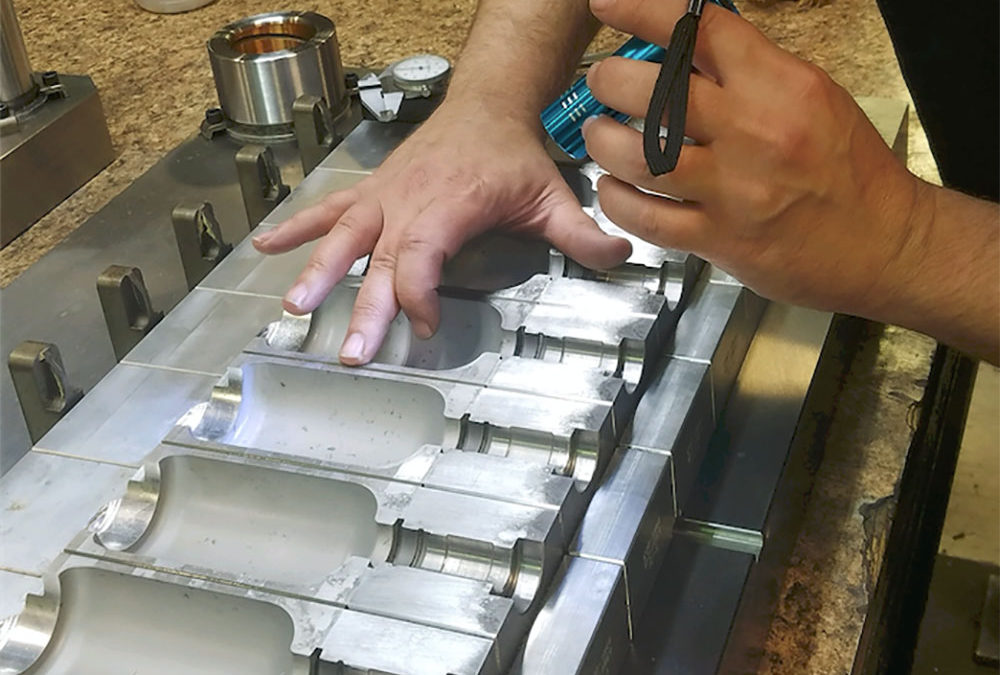Tooling assets can represent a large portion of investment for companies who rely on them for their manufacturing operations. These physical assets typically include molds, dies, and other forming tools or assemblies that are stored at some location and removed for plant floor use. Once on the floor, several things can happen to them. They can be used, inspected, serviced, reconditioned, transferred to another location, or even decommissioned. Hopefully, they will get returned to their original location but it’s not uncommon for companies to have difficulty finding their assets when they are needed. It can be especially challenging for businesses that have multiple manufacturing locations or use third-party resources that may or may not share tooling assets.
Knowing where your tools are affects productivity and profitability
A key concept surrounding tool asset management that manufacturers need to realize is utilization. From the people responsible for allocating tooling budgets to plant floor workers, everyone should be fully aware of a tool’s activity, use, and condition. Without knowing a tool’s whereabouts, it’s impossible to know its lifespan, maintain business continuity, or make informed decisions for future spending.
As an example, a consumer packaging goods company received a high-volume order for an over-the-counter medication product. The product is sold in plastic bottles that must meet stringent compliance regulations, including tamper-resistant packaging (TRP). When it came time for production, the bottles were leaving the line with a flash molding defect. It was discovered that the mold was not in optimal condition. Because there was no mold preventive care program in place, the manufacturer was not able to fulfill the order on time, resulting in loss of profits and an embarrassing disruption to its supply chain.
Drawing upon lessons learned from situations like these, companies should examine the real cost of their physical tooling assets and be able to answer the following questions at any given time:
- How many assets does your company have and what is their total value?
- Where are all of the assets located?
- What is the condition of each asset?
- What is the cost to maintain the assets?
- When should the assets be replaced?
- Do you have a viable Preventive Care Program in place for maintaining your assets?
- Do you have a work order system to record and track events on assets when issues arise.
Creating an effective tool asset management program
For medium- to large-scale OEM and molding manufacturers, the process begins with taking an inventory of all assets, inspecting, and assessing their condition. Asset identification numbers, and work order processing, generate real-time data of an asset’s history, cost, and status.
A computerized maintenance management system (CMMS), will improve manufacturing efficiencies, and drive best practice maintenance processes globally.
It can be challenging for companies to develop effective asset management programs themselves. Consider working with a consultant who can customize a global mold asset management solution with dedicated services and a robust CMMS platform to achieve the following benefits:
- Establish universal rules for tool use, maintenance, and storage
- Centralize management of global assets
- Control who has responsibility for tooling assets, create accountability for tool condition
- Gain automated inventory control
- Move toward data driven predictive maintenance
- Increase the value of tooling assets (extended life = more output)
- Maintenance costs become planned events, not a reaction to emergencies
- Develop standardized processes for tool repair, reconditioning, decommissioning, and reordering
- Planning for adequate lead times, removes bottlenecks in manufacturing
- Improve tool life understanding between purchasing departments and plant floor users
- Empower collaborative solutions with an effective tool database with greater visibility
- Reduce errors with access to related support document library
- Avoid a tool crisis on the plant floor
- Experience faster problem-solving
- Support ISO certification with proven documentation
For more information on how COAST Systems can help you gain control of your company’s tooling and mold assets through our customized service, Coast Mold Visibility Program (C*MVP) and our proven CMMS solution, contact us at 1-877-262-7801.
Contributing author: Jerry Sherman, President, COAST Systems


Recent Comments